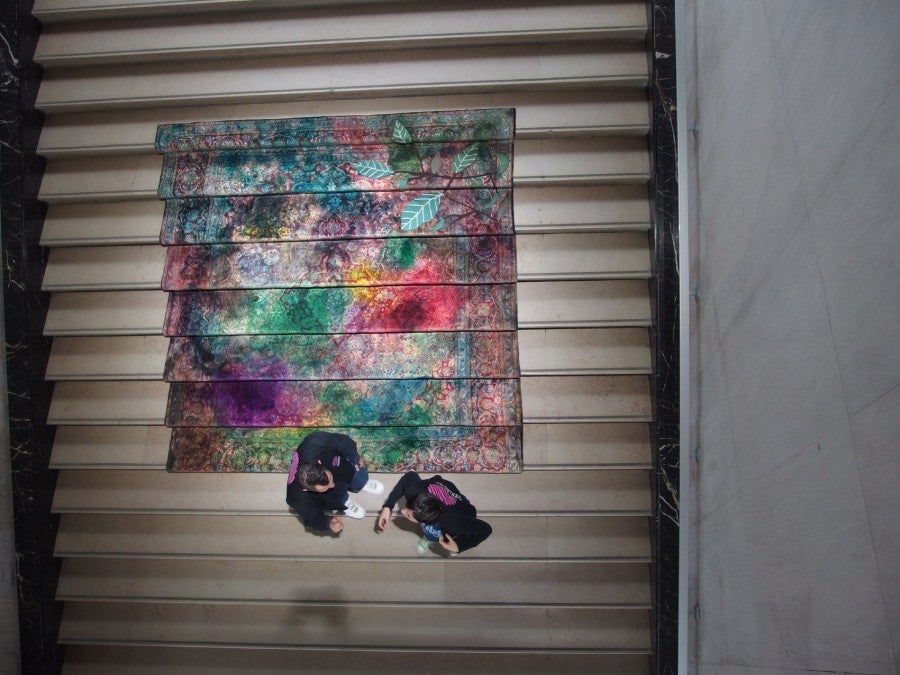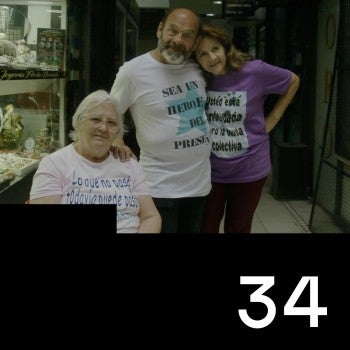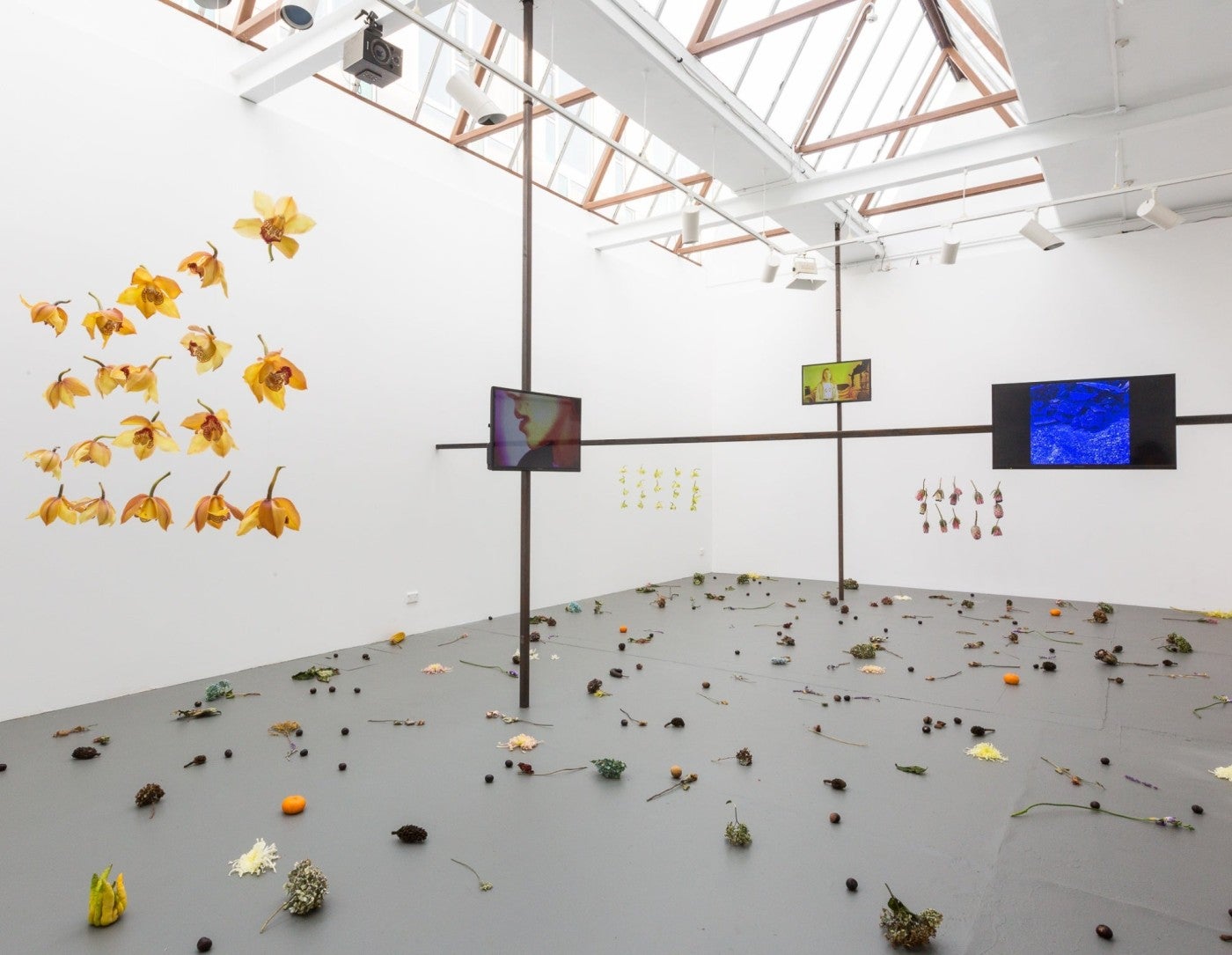
“A” is for Am Stram Gram
The ability to flip between categories and eschew fixity is an ethical imperative in this artist’s practice...
The smell of bleach figures prominently in my first encounter with Chloé Quenum’s production. During her brief stay and exhibition at Mercer Union in Toronto in 2012, I witnessed the artist excavate an abstract image out of a black cloth by a process of chlorine reduction performed en plein air on the side patio of the gallery. She stressed the textile, washing and manipulating the weave until a new visual field was pulled into existence. The result resembled a rusty sun-print, fleshy yet serene, a skin stretched over a fourfold frame that stood upright by its own counterforces. It held in tension a paradox: did this variegated surface conjure marble, cold cuts, or pink clouds? It was a specimen unclassifiable in botanical terms. By skirting such binary diminishments, the work enacted an affinity with Roland Barthes’s description of The Neutral as “everything that baffles the paradigm.”1
Across all her material experiments and re-codifications of objects, Quenum stretches the limits of common forms, testing the very conventions of how we perceive and name them. One of the strategies she engages to do so is by acts of repetition. In the installation Am Stram Gram (2012), she presents three distinct sculptures, which are fundamentally the same form, just folded or rotated in a way that permutes between furniture and architecture. A folding screen laid sideways becomes a bench, and the same form stretched flat and placed vertically becomes a wall. The title of the piece borrows from a counting refrain in which a cascade of nonsensical but pleasing sounds determines which child takes the first turn in a game. This linguistic pattern is an etymologically indecisive oral tradition. Of blurry origin, it falters across time and place in its transmission. While in English a screen is a screen is a screen, in French “paravent” and “écran” are close but distinguished cousins – one shelters from the wind, while the other captures light and produces cinema. The standing glass partition in Quenum’s installation hosts a projection of two figures chanting Trois Petits Chats, a clapping game in which the last syllable of a word repeats as the beginning of the next. This pattern is called anadiplosis, borrowed from Greek, meaning to reduplicate. Through a procession of slippages in the chant, the titular cat shapeshifts from straw hat, to string, to milk, to somnambulist. This ability to flip between categories and eschew fixity is in fact an ethical imperative in this artist’s practice who consistently champions the migration of forms across different contexts.
Many of Quenum’s works feel most at ease in straddling differential environments. Am Stram Gram occupied an interior space in the gallery but was also refracted out into the exterior world, with the addition of a commercially-sourced swing which the artist placed on the belvedere. By decree of the white cube, the hard glass surfaces of the sculptural components in the gallery scorned the possibility of warm repose, whereas the outdoor swing welcomed visitors to sit and look outward towards the urban vista. Quenum’s works often outplay paradigms by being in two places at once. This facility of moving between strict categories matches a precept of what Gloria Anzaldua proposed as a radical new form of consciousness to replace the constrictions of western binarism. She writes, “La mestiza constantly has to shift out of habitual formations; from convergent thinking, analytical reasoning that tends to use rationality to move toward a single goal (a Western mode), to divergent thinking, characterized by movement away from set patterns and goals and toward a more whole perspective, one that includes rather than excludes.”2 For Quenum, the outplaying of such binary thinking is performed through inhabiting existing symbols differently, through the visual transcoding of moving familiar and banal motifs into new and heightened scrutiny and the troubling of dichotomies such as lasting/ephemeral, inside/outside, here/there, self/other.
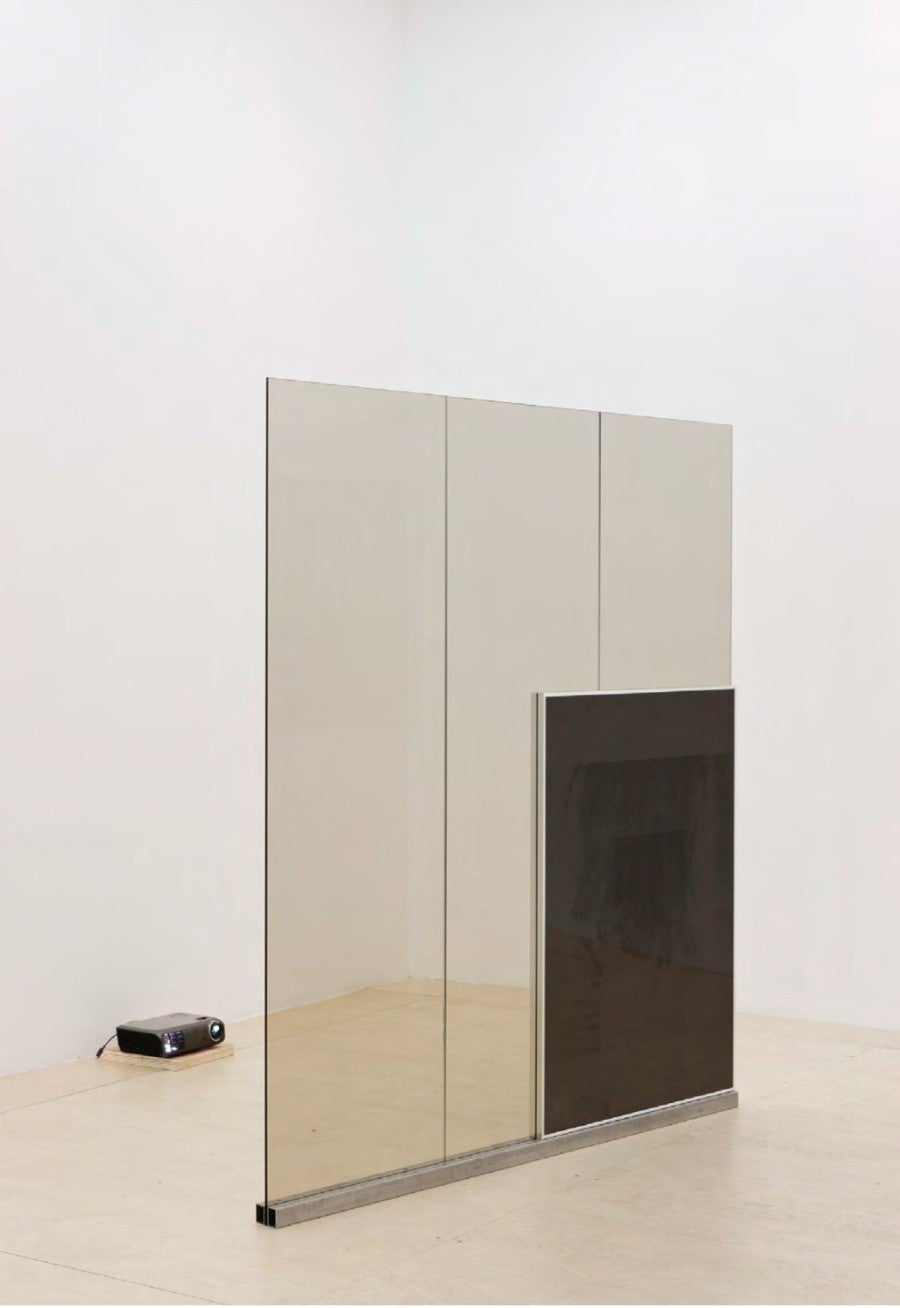
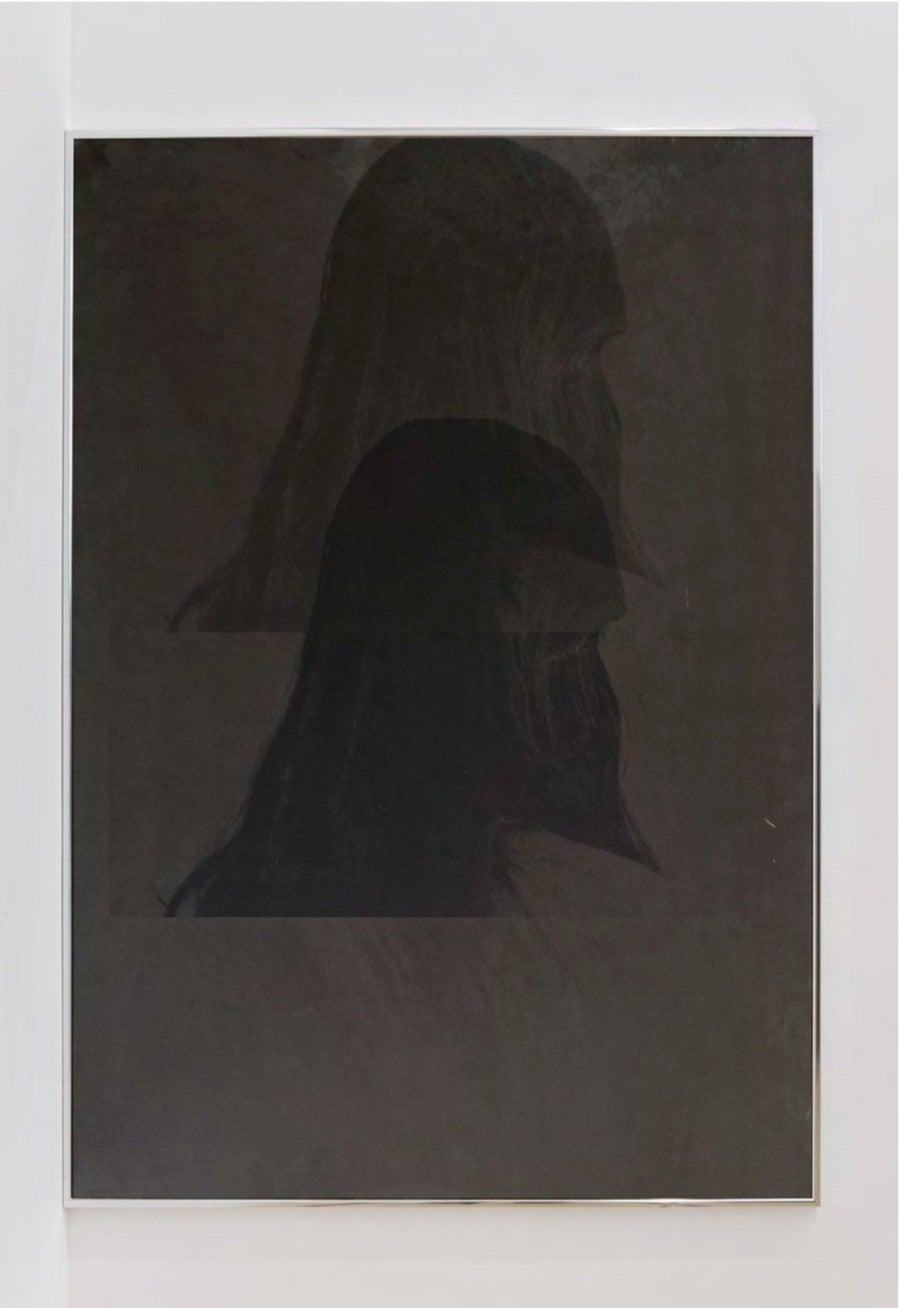

The hybridization of forms is brought to the fore in Dune (2015), a piece commissioned by the Centre Georges Pompidou to serve as scenography during the Vidéodanse festival. Imagine a skatepark draped entirely in copies of various rug patterns from differing regions and traditions and you have the look of the installation. Part landscape, part jungle gym, this sprawling parcours of stacked carpets wound its way from stage to staircase in a network of stations that visitors could either tread or rest upon. Such rugs, the result of the painstaking inter-generational muscle memory of their artisans, often denote luxury and voluptuous repose, but here they invited more active even athletic enterprise. This rugged terrain introduced a new syntax, a possibility of interplay between pre-existing graphic systems. It was an act of appropriation that freed the objects from their existing symbolic regimes, unleashing them into a new and tantalizing architectural proposal. Like their desert-derived title, they also offered slippery slopes, subject to sudden movement, gradual erosion, and shifting lines, asserting a transient status that pervades much of Quenum’s aesthetics. Similarly, Circuit III, which started its material life as a copy of a Kashan carpet, undergoes a series of transformations, becoming an instrument of service according to its various transits. A functional mobile architecture, this piece became an itinerant vessel, hosting possibilities such as temporary work space or padding for a staircase. Through various processes of addition and subtraction, she manipulated the textile as if it were a colour photograph exposed to water, its loosened emulsion bleeding into free-flowing pools of pigment. The work evidences a character of adaptability and intermixing that is at the heart of Quenum’s artistic inquiry.
“B” is for Botanical
Quenum is attracted by lesser-catalogue aspects of cultural production, the narratives that fly under the radar of official accounts...
The difference between glass and crystal, Quenum tells me, is only a matter of lead. This single ingredient demarcates the everyday from the opulent and she likes to mix such metaphors. In discussing the installation La Grande Place (2019), she refers to the shapes of these apples, pears, oranges, lemons, bananas, quince, figs, and grapes as “the banal become monstrous.”3 Is it that taxonomy creates monsters? Or perhaps the otherworldly colour palette and strange embellishments of the outlandish fruit that prompts a synesthetic short-circuit? The title of this work “La Grande Place” refers to a place in the factory reserved for the most elevated status of the artisans in crystal manufacture. The 111 hand-formed crystal and metal fruits that form her installation are “perruques,” literally translated as “wigs” to connote their clandestine status. This furtive artistic output, created by artisans during breaks and off-hours, is tacitly acknowledged as an underlay of the official process, and prized by a specialized market of collectors who buy works outside of factory license. Through her installation she highlights a quotidian activity slipped under the mantle of industrial production, broadcasting this secretive activity through a crystal cornucopia arranged on illuminated glass display units. Each is a unique object, a hapax legomenon of the manufacturing process, individually handmade. Redeploying existing tools and materials against the grain of factory output, these assembly line workers also moonlight as artists. I tasted this category of subversive production myself once, sneaking into an office tower after hours to access computers and printers with my friend, a clerk there by day, a poet by night. The financial district became, briefly, our stolen studio. Was the poetry written there sweeter because it was unsanctioned? Quenum is attracted by just such lesser-catalogue aspects of cultural production, the narratives that fly under the radar of official accounts and she often selects botanical protagonists as metaphorical agents in her work.
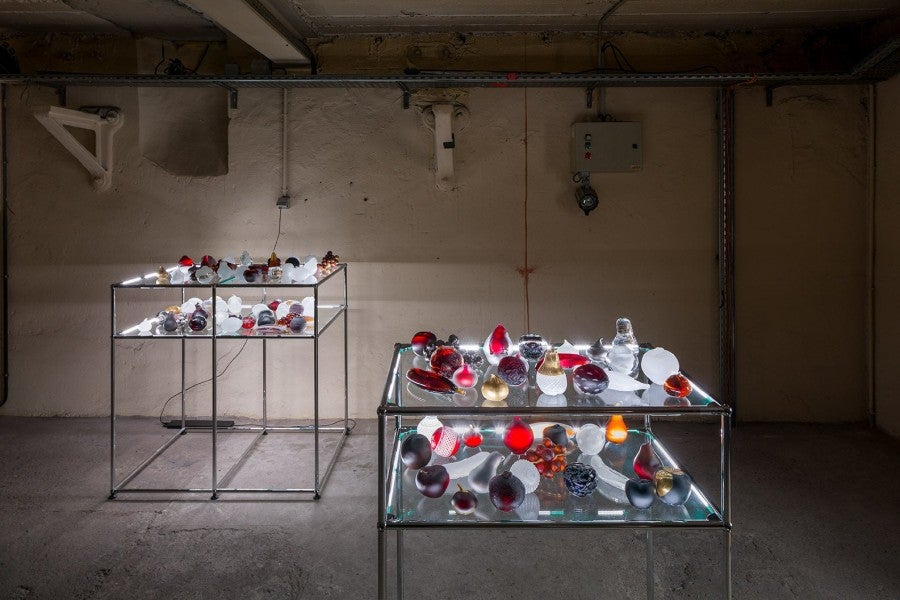
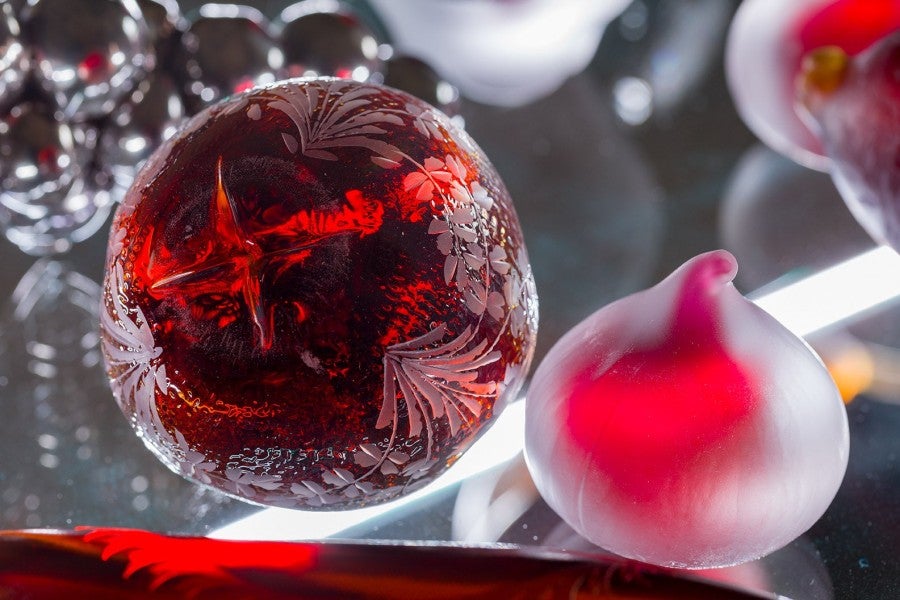
Our names are one of the most charged stories we are assigned.
The title of her work Le Sceau de Salomon (2018) is the name of a flowering plant so named because when the leaf roots fall away from its rhizome, the remaining impression or scar resembles a seal. It is a flower name with a rich chain of symbolic associations, suited to the artist’s interest in the way signs and stories recirculate through language. This installation was created as the culmination of her residency at Te Whare Hera in New Zealand and involved non-native flowers and fruit arranged on the floor and suspended in space, amidst moving images and sound works. Like all cut flowers, they underwent a process of natural preservation, eventually becoming fully desiccated. Such dried flowers often hold sentimental value, when marking an event that has passed. The plants signal a displaced presence, while creating their own landscape inside the gallery, calling across the distance between her home in France and her temporary residency in New Zealand. Passage is a key theme in this work, which includes video footage captured in various sites across different time zones traversed by the artist. Rather than asserting hard borders and outlining the foreignness of this flora, she creates an interstitial place, a floating world of confluences, where one territory’s season intermingles with another, two time-frames superimposed. Much of Quenum’s work is interested in upending and remixing signs, symbols and materials. She wishes to diminish the reductions performed by neatly classifying subjects according to fixed expectations, favouring instead the convergent, the ambiguous and the aleatory. There are political and philosophical stakes to asserting this space of hybridity.
While in New Zealand, she conducted a workshop titled “What’s your name?” in which she asked respondents to discuss their names. The video portraits have yet to enjoy public exhibition but she kindly shared the work-in-progress with me. In many examples, the face of the respondent is beyond the frame, with only their upper chests revealed. In other cases, with subjects more intimately known to the artist, their faces appear, revealing more of their character and mannerisms. Each voice carries clues to age, culture and personality. Discomfort and shyness, but also joy and pride, are all palpable emotions in these portraits. The process of naming oneself is to select one’s own preferred image and to project that into the world. Our names may also reflect hybridity and movement between continents, just like the migration and hybridization of plants. This is the case for Quenum’s own name, which is prevalent in Benin, but also found in France, indexing a relationship that pertains to colonial exchange. Our names are one of the most charged stories we are assigned. When people want to probe my ethnicity, they will often ask about my two last names. If I want to be flippant, I say that I’m half bananas (the most famous of Ecuador’s exports, where my father’s surname Robayo originates), but in the plant world, the most fitting trajectory to cite would be that of the potato which is said to originate in the Andes but has circumnavigated the globe and ended up a vital staple in Ireland (where my mother’s surname Sheridan is common). How I bear both names speaks both to the collision of Northern and Southern hemispheres and the desire to assert matrilineal lines. In naming our own children, my sister and I agreed to split our given names in half, each carrying forward one to add to that of our respective partners in order to create a new typology for our children. By posing the question, What’s your name?, the artist seeks to locate just such improbable, serendipitous and unclassifiable ways that we inhabit these monikers. She actively resists the ethnographic imperative to find origin points, highlighting instead the way language trembles in its ability to circumscribe identity.
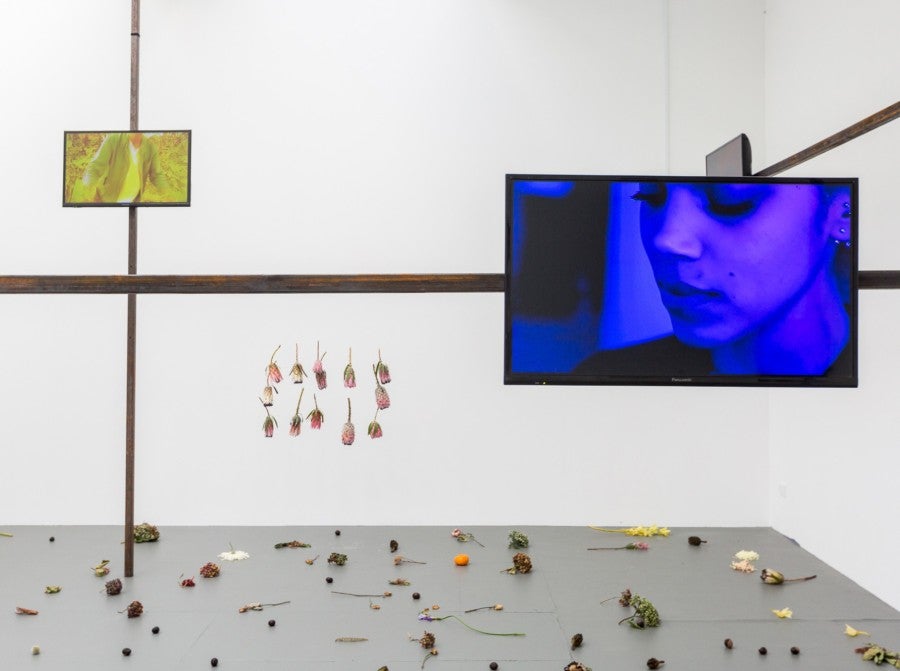
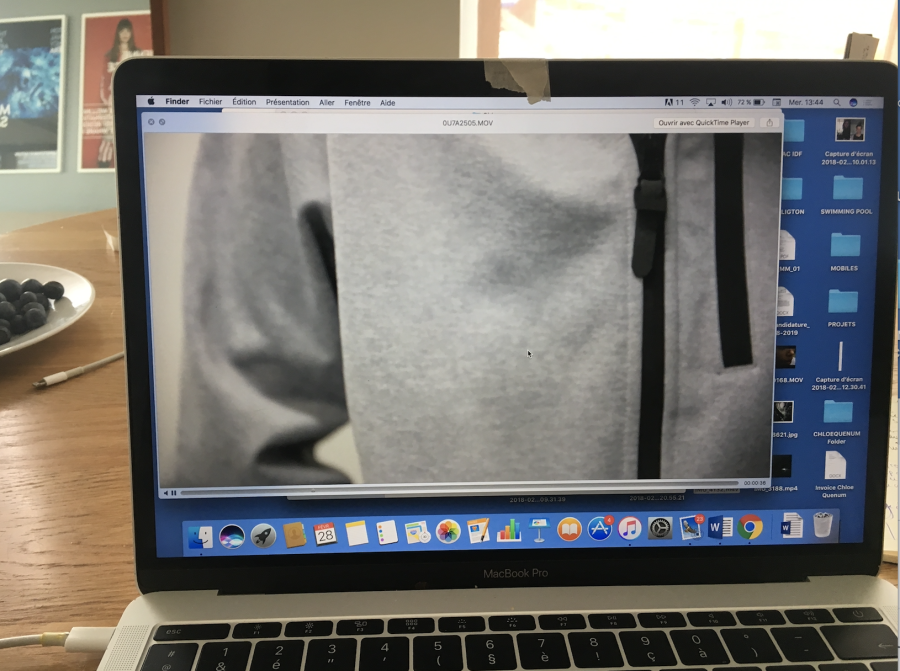
“C” is for Copper
A material demonstration of life and death cycles is at play in Quenum’s three-dimensional nature morte.
On Quenum’s return home from the overseas residency, she presented the exhibition Châtaignes (2018) in Paris. The project served as a mode of meditation on her passage between temporalities, languages and landscapes. The exhibition is a twin in a cross-continental drift. In this installation, fruit was scattered across the gallery floor, the surplus of an unlikely windfall from crops that had somehow flourished indoors. The chestnuts of the exhibition’s title are synonymous with the French delicacy called marrons glacés (candied chestnuts) but in other periods, their tree was a subsistence crop referred to as arbre à pain (bread tree). Perhaps also in homage to their overabundance, in English, we use the idiom “an old chestnut” to refer to an adage that has become exhausted by its constant repetition. Chestnuts are challenging adversaries in the kitchen, as they are difficult to free from their hard casings unless perfectly roasted. Inspired by the protective film characteristic of the chestnut, Quenum applied a new skin of clay or copper to other harvests. For this project, the clay-covered fruit are to be sourced locally according to the season, whereas the copper-covered fruit are permanent sarcophagi. These copper casings remind me of a bronzed baby shoe that once belonged to my father, a memento mori of his first steps. The shoe and this fruit remind me in turn of the smell of a copper penny, now an obsolescent currency.
A material demonstration of life and death cycles is at play in Quenum’s three-dimensional nature morte. Sealed in copper, the interior contents become mystical, whereas the clay peel is subject to more rapid decay, cracking open as it dries, releasing the final spirit of the trapped fruit. What will be the fate of these preserves over time? Will some future archaeological seeker be able to discern the contours of contemporary art? Two other found objects operate in counterpoint within Châtaignes—an empty glass vase that would normally host a bouquet and a hand-made metal fruit stand from Benin. They are intriguing offerings, receptacles for natural bounty, here emptied and posed on the floor, obstacles to delicately tip toe around as the visitor traverses the space. A pair of repeating line drawings of a hand and a heart are record tattoos that the artist observed during a workshop that invited the public to share their body markings. On an opposite wall, a large textile piece features personal field notes from the residency period which are hand-embroidered onto cloth. Through these adjacent works, a reverse transcription is performed—needle on skin becomes ink on paper, and ink on paper becomes needle on cloth, completing an orbit that is characteristic of Quenum’s strategies of moving signs through different procedures to invent them anew.

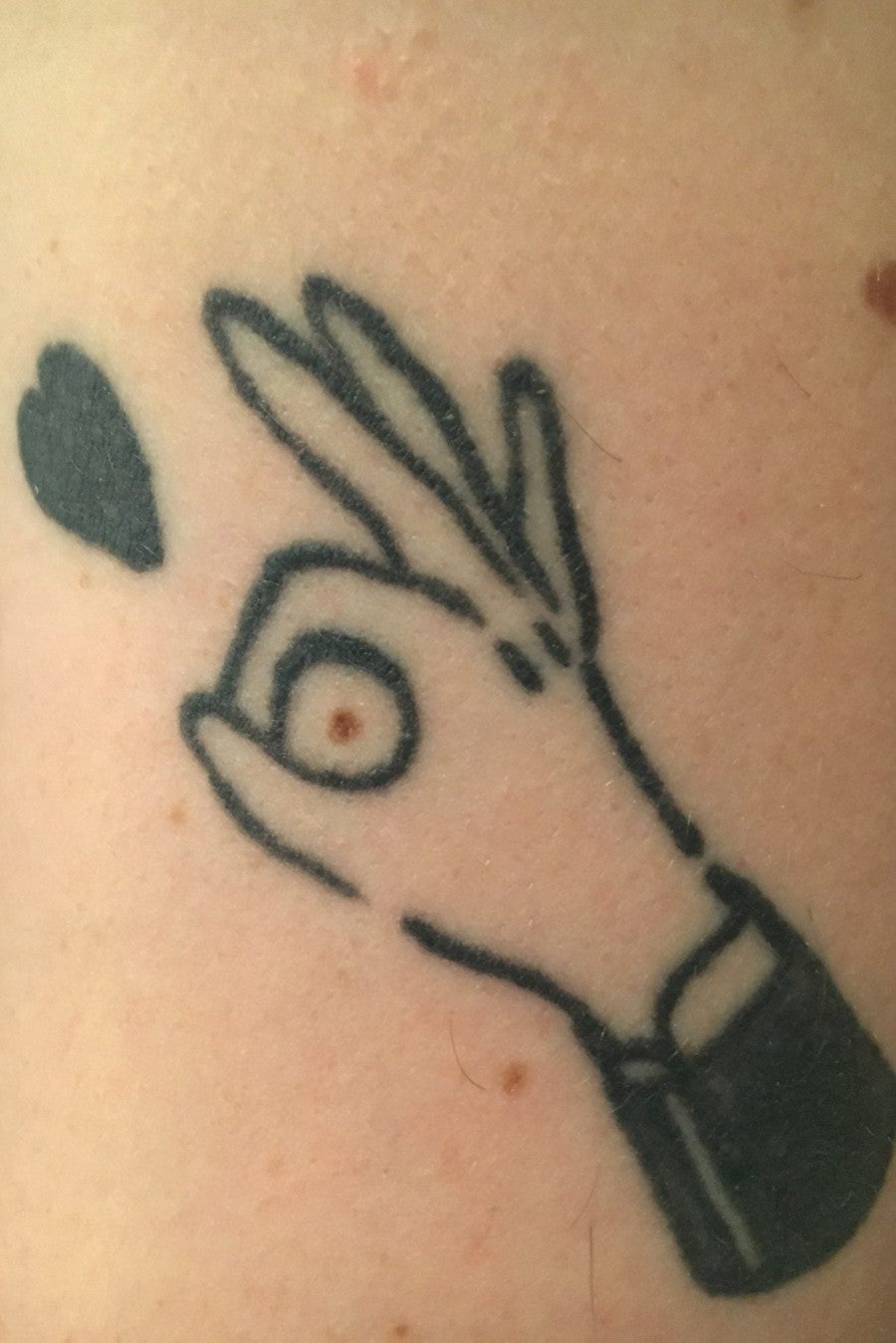
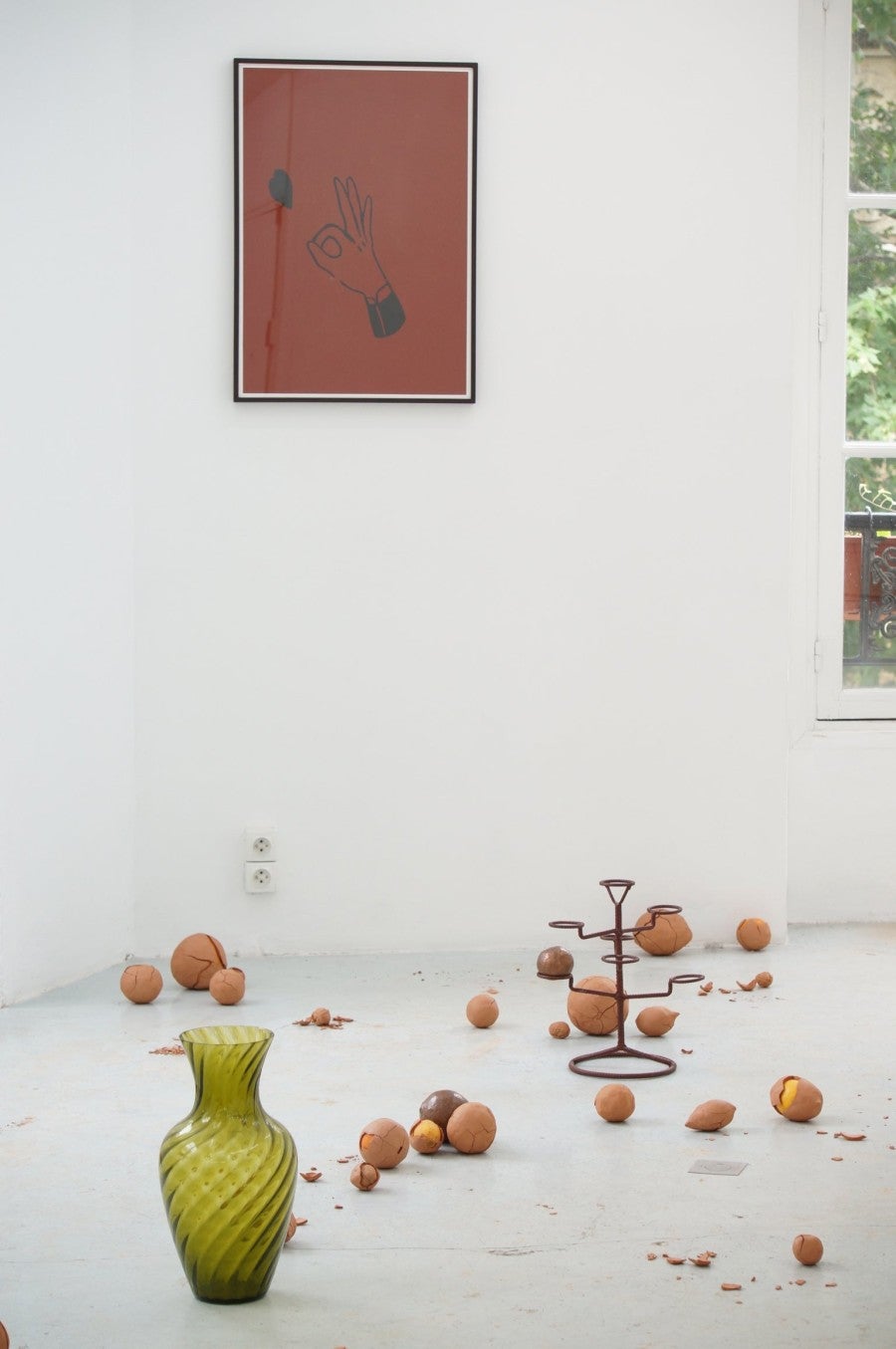
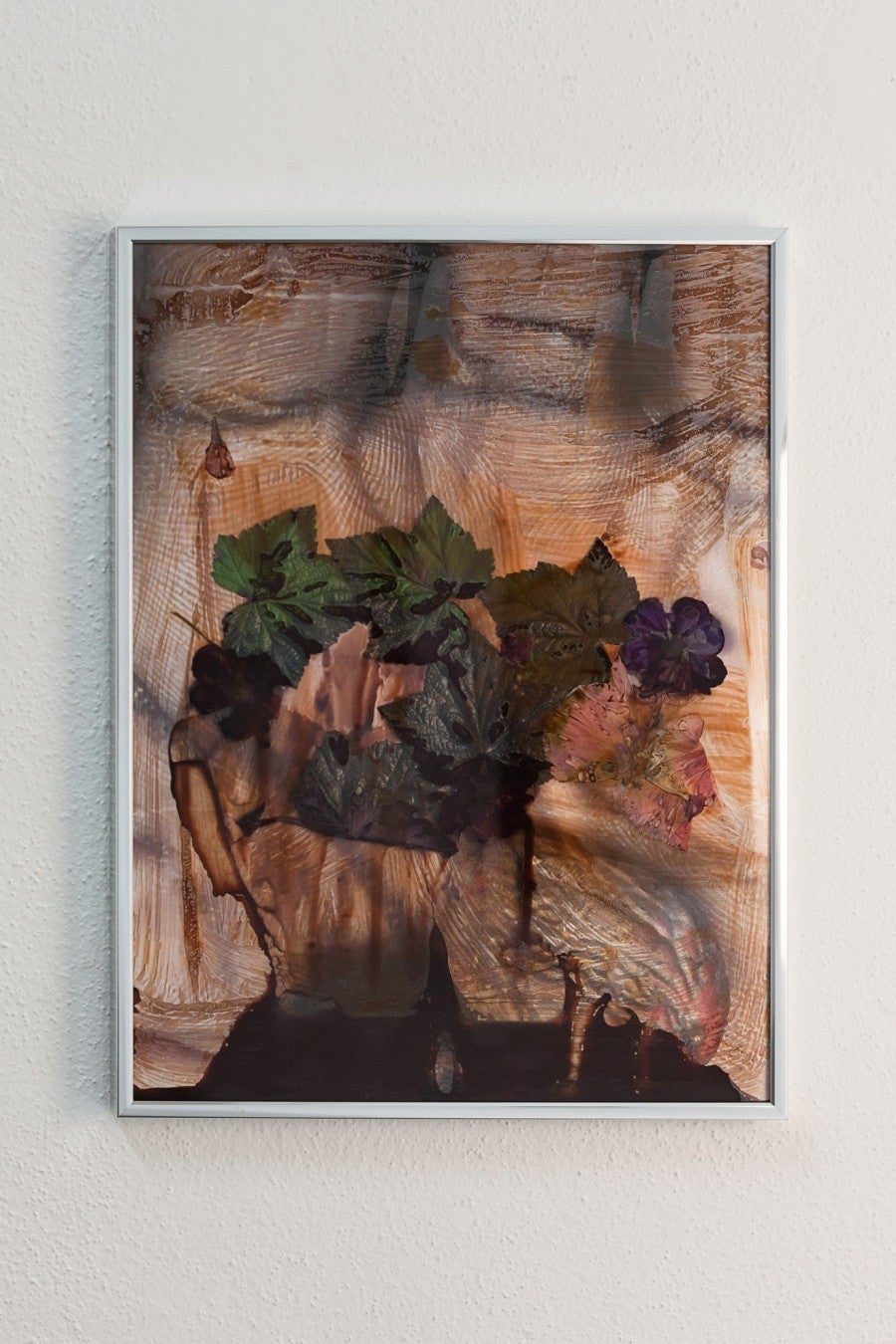
Many of Quenum’s images carry an evanescent quality that is linked to the same instability of copper and its susceptibility to changing forms through oxidization. Circuit I (2014), for example, is the product of a slow chemical reaction between a philodendron leaf trapped under glass and its copper housing. As the leaf disintegrates, the reaction generates a phantom imprint, much like a Rayogram. When copper toxicity appears in plants, their colour diminishes and eventually turns from vivid green to yellow or brown. Copper itself can tarnish and corrode overtime and hence in this work, both content and container are open to a process of decomposition that runs contra to the museological imperative to preserve. The choice of the philodendron designates an exotic plant made ubiquitous as a go-to interior furnishing for staging commercial photo shoots. In Augure (2014), we find a combination of leaves transposed upon the photographic image of a hand, covered in what appears to be metallic dust. Could this also be copper, as was used in the bronzing process in Châtaignes? This proffered palm reminds me of Richard Serra’s Hand Catching Lead (1968), where the artist’s palm is marked by repeated contact with the marking metal. The effect of the hand dusted this way in Augure is that the detailed lines of the palm are brought into high relief, exploding into complex networks. The image invokes the practice of palm reading as a form of fortune-telling, yet the complexity of the map we see far exceeds any potential possibility of divination.
“D” is for Drift
In Overseas (2020), Quenum narrows her focus on a single emblem of tropical export and exoticism, making a case study of the pineapple, a fruit synonymous with beach getaways, piña coladas, and tiki bars. To Canadians who grew up in the 1980s, “Ananas” was the name given to a talking pineapple who served as our companion in a series of televised French language instruction videos. In one episode, faced with a museum entry sign “Musée de l’Homme”(Museum of Man), the fruit is prompted to query the guard “Mais où est le Musée des Fruits? » (But where is the Museum of Fruit?).4 The fruit asserts its sentient status and asks for recognition as a speaking subject. In Quenum’s site-specific exhibition presented at Les Bains Douches in Alençon, the pineapple also speaks, but in hushed tones and gentle allusions. In her version of a pineapple museum, the fruit’s contours are traced through a series of trompe l’oeil paintings applied directly to the wall, which can be perceived through a standing eye titled Teardrop. The eyelashes, like the scales of a pineapple, proffer hooks, calling upon garments to be hung there. This metal stand is also a proto-photographic device, offering multiple sightlines and framing possibilities for the works on the wall. The space itself is an echo chamber of existing architecture and refraction, with the illusory windows mirroring the form of existing apertures on an opposite wall. The horizons seen through these imagined openings are a disorienting mix of scales and perspectives from close-up to faraway—a hand, a shirt collar, a verdant garden, a ship mast. The whole suite of images destabilize a centralized perspective, favouring a distributed form of looking that shakes the foundations of any would-be exoticizing gaze.
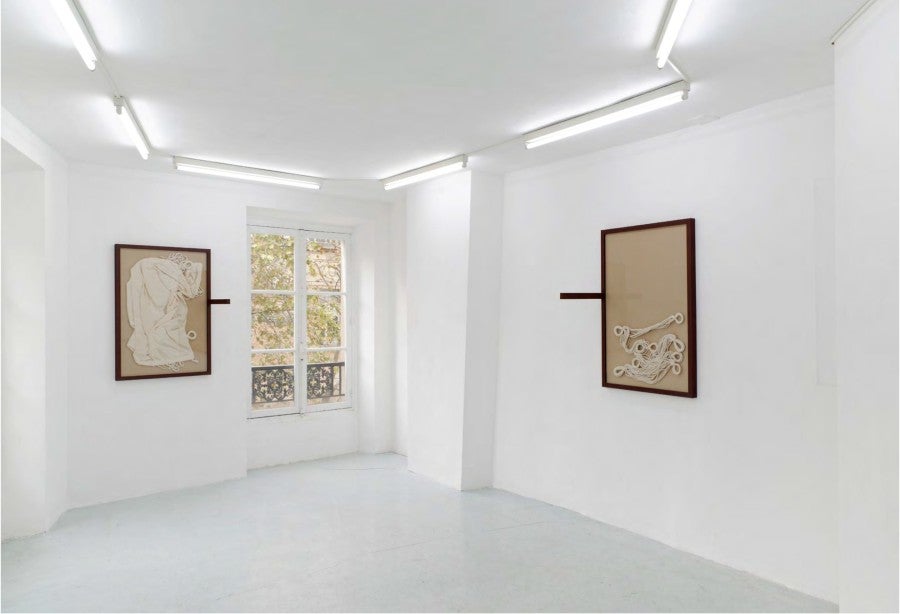

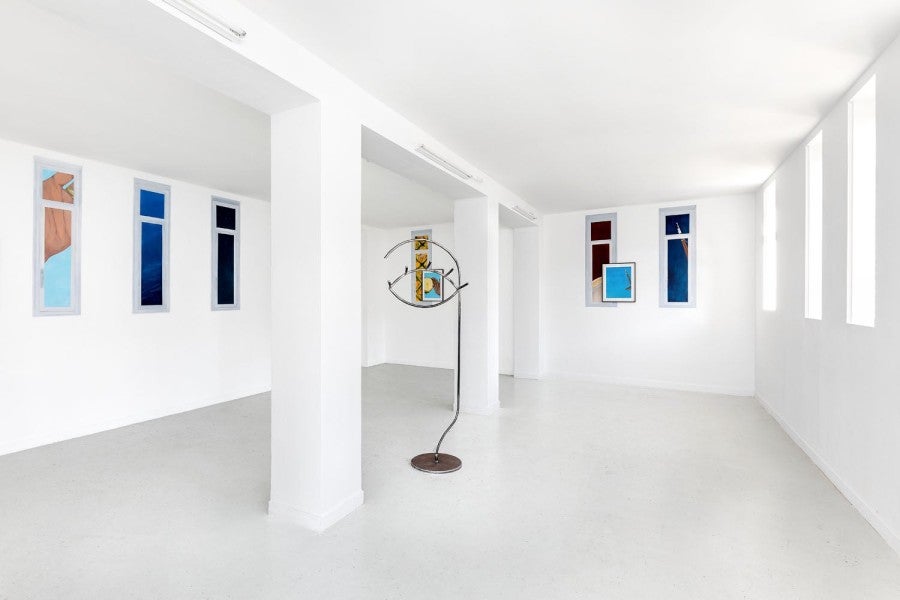
...can transmission be more circular rather than linear?
Throughout her practice, Quenum loosens signs from sources, rendering new formal considerations. Signs extracted from various differential contexts are at the core of the exhibition Élise that brought together Les Allegories (2016), Names (2016) and Protection (2016). Les Allegories comes from her research into fabric motifs in Benin and Togo. When these textiles are worn in Africa they convey specific meanings through their graphic compositions. Transposing these from their source context, they reappear encased within tinted cathedral glass, which is inherently textured and semi-transparent. The resulting new sign system speaks to the long history of wax resist fabrics which are multimodal, swinging between pivot points linked by colonization. Dutch merchants observed batik techniques in the project of colonizing Indonesia. Returning to the Netherlands they adapted these concepts to new methods of industrial production, hoping to sell these factory-made textiles back to the colonies. Though these industrially manufactured fabrics didn’t take off in Indonesia, by the 1880s they became popular as a European export to West Africa where they took on an identity of their own, irrevocably now associated with African patrimony. Ultimately, the material culture of these prints represents a complex framework, a call and response between tastes, locales and means of production and colonial trade. Lifted from these referents, the lines become graphic abstractions, brought into a new light as lead elements in these windows. Adjacent to the windows, Names is a piece of cut blue PVC vinyl that lies on the floor like a stencil, its incisions reproducing a series of morphed Hebrew ideograms. Laid atop this thin blue reflecting pool are seven hand-blown glass elements called Protection whose forms are derived from a rebus found on a calabash from the Kingdom of Dahomey. Their transformation into glass further obscures the puzzle. Posed in situ together Les Allegories, Names and Protection function as their own symbolic, yet cryptic regime. These rich sign systems, pulled from disparate iconographies are placed in a new equivalency. By inserting herself into the history of these signs, Quenum proposes an interruption of the circuit that prompts the question, can transmission be more circular rather than linear?
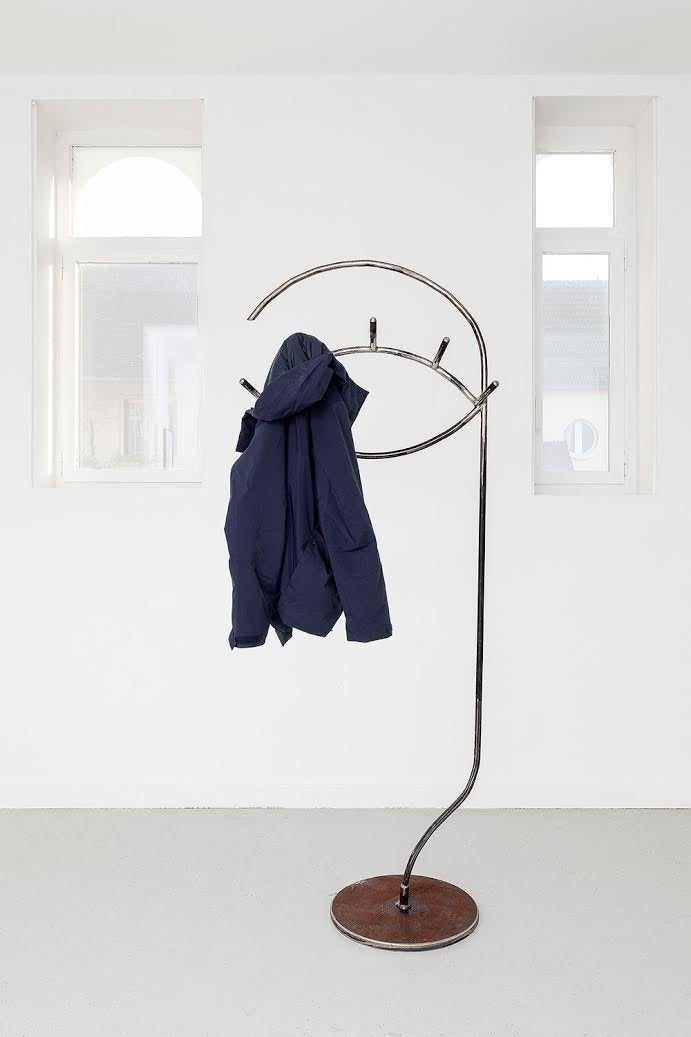
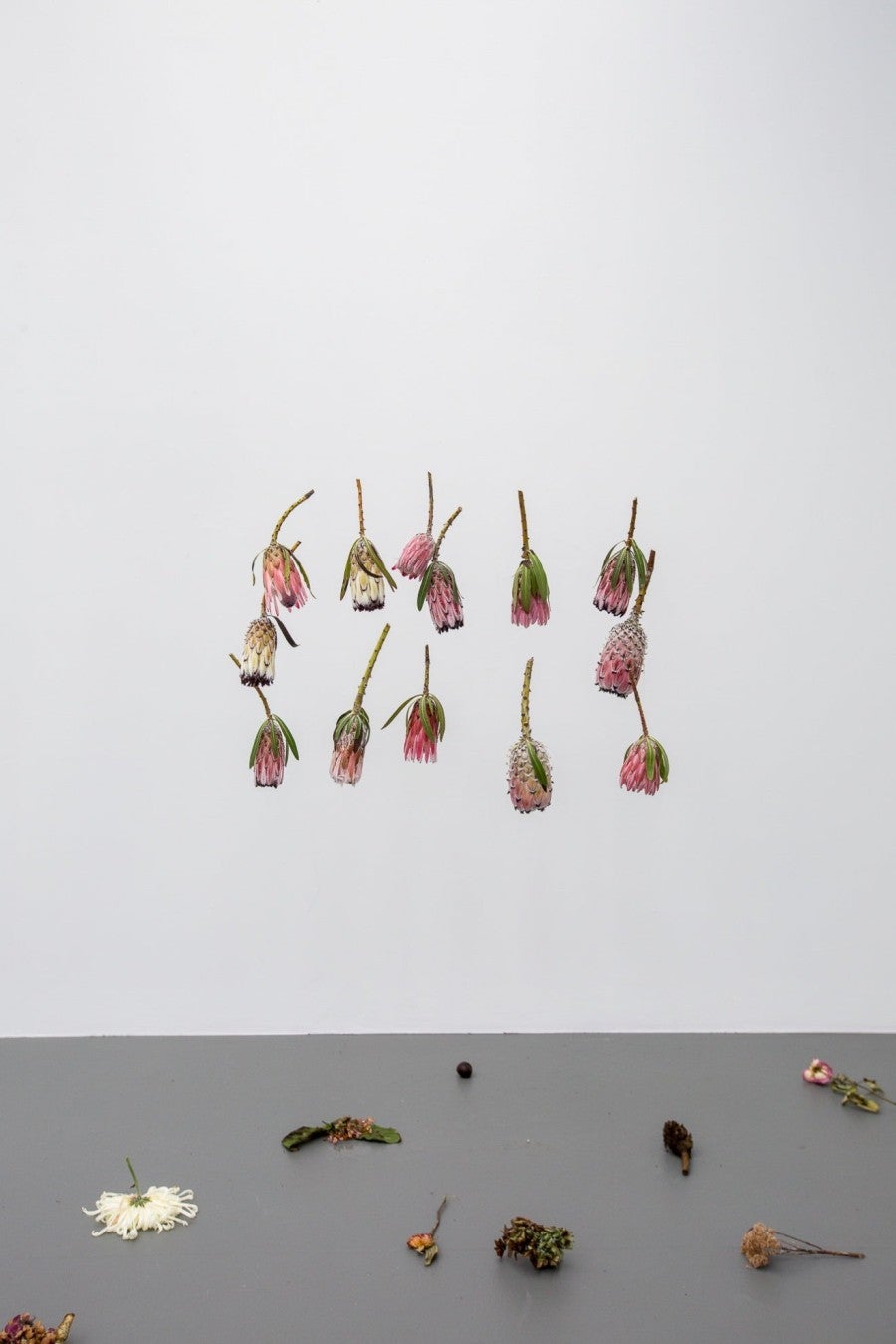
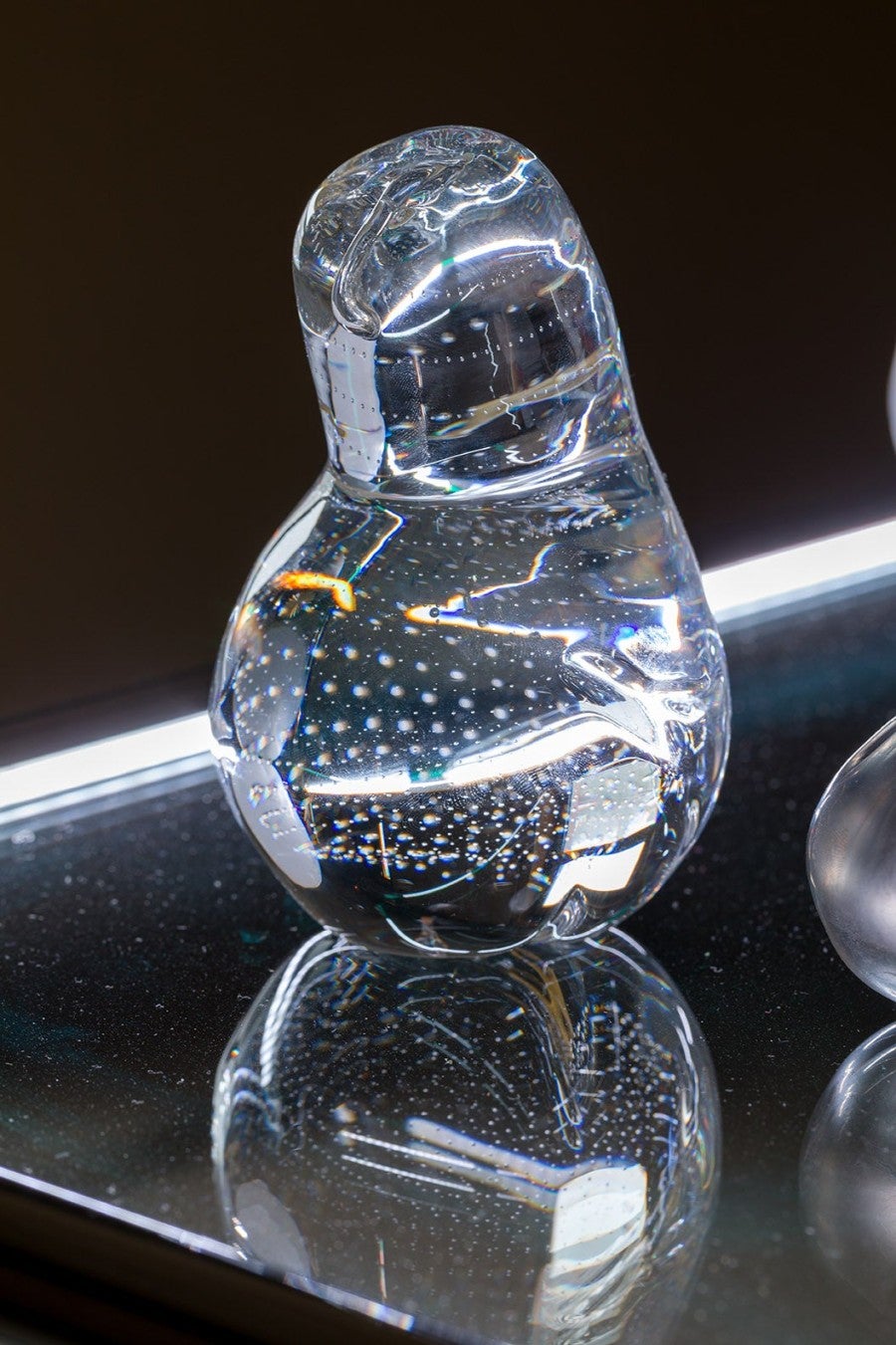
Quenum’s artworks share a continuous arc that could be described as the action of unmooring. In her series Leeway (2013), white cloth pieces sealed under dark wood frames resemble lowered sails but are in fact hammocks encased under glass. Like sails to the wind, hammocks also sway, but by the rock of our bodies. These resting envelopes are cocoons associated with leisure and outdoor naps, but when these hammocks are frozen in place, they become graphics. Their stillness evokes a burial shroud. The wood frames operate beyond the expected display and protective functions of a picture frame. A hybrid between picture and sculpture, Leeway contains protruding wood stems that extend beyond the reach of the frame. Some of these extensions stick out at a right angle from the wall, others are connective tissues between the elements in the series. Are these protruding angles meant to protect in the same way that certain fruit have evolved spikes to ward off predators? Quenum offers us yet another synesthetic enigma to untangle. Leeway is a nautical term that refers to the sideways drift of a vessel as it is compelled by natural wind forces and currents, causing it to deviate from course. Drift is thus a perfect way to describe the way that Chloé Quenum’s whole artistic method leans, and conjures an association with the Situationists who championed the dérive as an antidote to the boredom imposed by commodity culture. While they employed drift as a way of tracing the contours of an urban environment, the psychogeographic pathways proposed by Quenum’s works are not tethered to a specific locale. Instead, the trajectories she proposes hover in between time zones, identifications and conditions. To borrow again from Anzaldua, “The new mestiza copes by developing a tolerance for contradictions, a tolerance for ambiguity. (…) Not only does she sustain contradictions, she turns the ambivalence into something else.”5 Again and again in Quenum’s work, the spectator is asked to drop biases in order to consider the world anew. To give someone leeway means to bestow autonomy and to tolerate divergence. Leeway invites the possibility of navigating or acting between things. In Quenum’s studied and generous practice, there is never a true course, never a fixed origin, never a definitive source, only ever a complex network of provisional crossings and fluctuating conditions subject to reconstitution at a moment’s notice.

